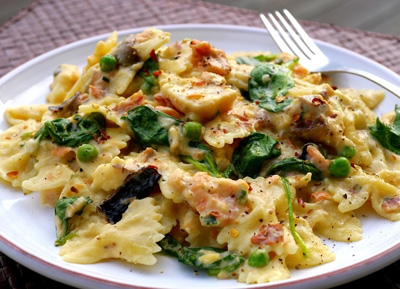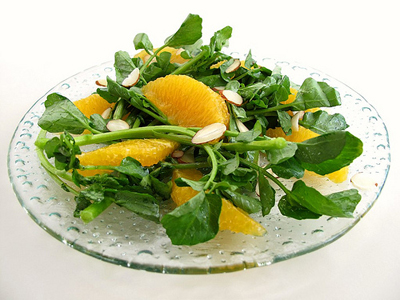 In general, shiitakes come in two forms: the slender stemmed variety and the ones which are fatter, with thicker stems and caps. Mitsuwa and SF Supermarket sell the fatter variety, which have a meater flavor.
In general, shiitakes come in two forms: the slender stemmed variety and the ones which are fatter, with thicker stems and caps. Mitsuwa and SF Supermarket sell the fatter variety, which have a meater flavor.
With so many on hand, they can be used liberally in pastas and soups, grilled, and sautéed with garlic and shallots.
But how to store the ones not eaten those first couple of days?
Everyone knows that mushrooms should only be stored in the refrigerator in paper bags because kept in plastic they quickly go bad. Use a brown paper bag--not a white one, which is coated with wax so the moisture stays inside the bag--in combination with paper towels. The moisture that normally accumulates on the outside of the mushroom is absorbed by the layers of paper.
Kept in the refrigerator another week or two, the brown paper bag-paper towel combination acts as a dehydrator pefectly drying the mushrooms. This technique only works successfully with shiitakes.
If by chance any of the dried shiitakes develop mold, discard and keep the good ones. In my experience, more than 95% will dehydrate without harm.

 I know many of you love winter so I shall do my best not to disparage it. However, it’s not my most favorite time of year as I’m a creature of warm weather and open-toed shoes. But if there’s one bright shining spot to the season it’s most definitely citrus. Citrus in any form. When I begin to see the beautiful stacks of pommelos and meyers I can’t help but get excited and my mouth begins to experience sympathy pucker just looking at them.
I know many of you love winter so I shall do my best not to disparage it. However, it’s not my most favorite time of year as I’m a creature of warm weather and open-toed shoes. But if there’s one bright shining spot to the season it’s most definitely citrus. Citrus in any form. When I begin to see the beautiful stacks of pommelos and meyers I can’t help but get excited and my mouth begins to experience sympathy pucker just looking at them. Without being super conscious about it, I have been making more and more vegetarian meals. Millet, lentils, quinoa, black beans, and lots of green vegetables are consumed weekly while less meat and chicken grace our dinner table. Don’t get me wrong, I like my animal protein. As long as it is pastured and raised in an environment that you and I would want to be raised in.
Without being super conscious about it, I have been making more and more vegetarian meals. Millet, lentils, quinoa, black beans, and lots of green vegetables are consumed weekly while less meat and chicken grace our dinner table. Don’t get me wrong, I like my animal protein. As long as it is pastured and raised in an environment that you and I would want to be raised in. Now that the holiday feeding frenzy is over (well, sort of) we are left with hunks and wedges of cheese and packages of smoked salmon. I swear my cheese drawer looks like a graveyard of half eaten-half scooped items. But there is no reason to let them go to waste and they are easily re-purposed into something amazing.
Now that the holiday feeding frenzy is over (well, sort of) we are left with hunks and wedges of cheese and packages of smoked salmon. I swear my cheese drawer looks like a graveyard of half eaten-half scooped items. But there is no reason to let them go to waste and they are easily re-purposed into something amazing.  There is probably no other fruit more versatile than citrus. Most people would assume citrus fruit, because it's sweet, can only be used in desserts. But citrus is great in both sweet and savory recipes. Just think of lemons, which are widely used in Mediterranean cuisine. And oranges, too, are often used in savory recipes. Citrus juice also makes a flavorful marinade and tenderizer for meats. I love oranges in salads, especially when they are paired with Asian flavors in the form of a dressing. This salad features peppery watercress, flaked almonds for crunch, and tangelos, which lend wonderful flavor and juiciness.
There is probably no other fruit more versatile than citrus. Most people would assume citrus fruit, because it's sweet, can only be used in desserts. But citrus is great in both sweet and savory recipes. Just think of lemons, which are widely used in Mediterranean cuisine. And oranges, too, are often used in savory recipes. Citrus juice also makes a flavorful marinade and tenderizer for meats. I love oranges in salads, especially when they are paired with Asian flavors in the form of a dressing. This salad features peppery watercress, flaked almonds for crunch, and tangelos, which lend wonderful flavor and juiciness.
